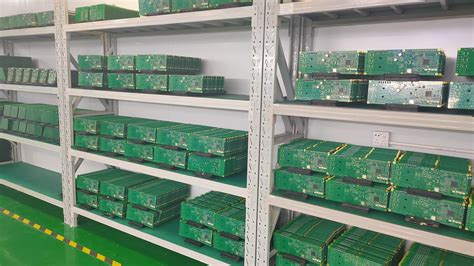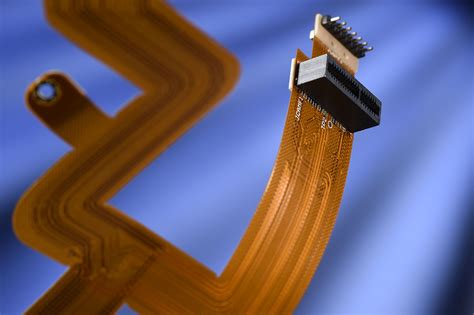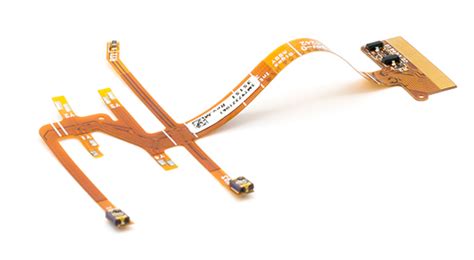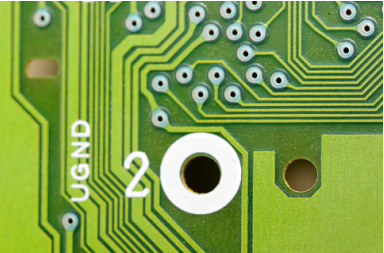Flex pcb ipc standard
Understanding The Basics Of Flex PCB IPC Standards
In the rapidly evolving world of electronics, the demand for flexible printed circuit boards (PCBs) has surged, driven by their ability to conform to various shapes and fit into compact spaces. As these flexible PCBs become increasingly integral to modern electronic devices, understanding the standards that govern their design and manufacturing is crucial. The Institute for Printed Circuits (IPC) plays a pivotal role in establishing these standards, ensuring quality, reliability, and consistency across the industry.
To begin with, IPC standards for flex PCBs are designed to address the unique challenges posed by their flexible nature.
Unlike rigid PCBs, flex circuits must endure bending, twisting, and other mechanical stresses without compromising their electrical performance. Therefore, IPC standards provide comprehensive guidelines that cover material selection, design considerations, and manufacturing processes. These standards are essential for manufacturers to produce high-quality flex PCBs that meet the rigorous demands of various applications, from consumer electronics to aerospace.
One of the key aspects of IPC standards for flex PCBs is the emphasis on material properties.
The choice of materials significantly impacts the performance and durability of the final product. IPC standards specify the types of substrates, adhesives, and conductive materials that are suitable for different applications. By adhering to these guidelines, manufacturers can ensure that their flex PCBs maintain optimal performance under various environmental conditions, such as temperature fluctuations and humidity.
In addition to material specifications, IPC standards also provide detailed design guidelines.
These guidelines help engineers create layouts that maximize the reliability and functionality of flex PCBs. For instance, the standards address issues such as trace routing, pad design, and hole placement, which are critical for minimizing stress concentrations and preventing mechanical failures. By following these design principles, engineers can develop flex PCBs that not only meet the electrical requirements but also withstand the physical demands of their intended applications.
Moreover, IPC standards extend to the manufacturing processes of flex PCBs.
The standards outline best practices for fabrication, assembly, and testing, ensuring that each step of the production process is optimized for quality and efficiency. For example, IPC standards provide recommendations for etching techniques, soldering methods, and inspection procedures. By implementing these practices, manufacturers can reduce defects, improve yield rates, and deliver products that consistently meet customer expectations.
Furthermore, IPC standards facilitate communication and collaboration across the global electronics industry.
By providing a common framework, these standards enable manufacturers, designers, and suppliers to work together more effectively. This collaboration is particularly important in the context of flex PCBs, where the integration of various components and materials requires precise coordination. Through adherence to IPC standards, stakeholders can ensure that their products are compatible and interoperable, ultimately leading to more innovative and reliable electronic devices.
In conclusion, understanding the basics of flex PCB IPC standards is essential for anyone involved in the design and manufacturing of flexible circuits. These standards provide a comprehensive framework that addresses the unique challenges of flex PCBs, from material selection to design and manufacturing processes. By adhering to IPC standards, manufacturers can produce high-quality flex PCBs that meet the demands of modern electronic applications, while also fostering collaboration and innovation across the industry. As the electronics landscape continues to evolve, the role of IPC standards in ensuring quality and reliability will remain indispensable.

Key Benefits Of Adhering To Flex PCB IPC Standards
Adhering to Flex PCB IPC standards is crucial for manufacturers and designers in the electronics industry, as these standards ensure the reliability, quality, and performance of flexible printed circuit boards (PCBs). The IPC, or the Institute for Printed Circuits, is a global trade association that establishes industry standards for the design, manufacture, assembly, and testing of PCBs. By following these standards, companies can achieve several key benefits that enhance their products and operations.
One of the primary advantages of adhering to Flex PCB IPC standards is the assurance of product quality.
These standards provide comprehensive guidelines that help manufacturers maintain consistency in their production processes. By following these guidelines, companies can minimize defects and variations in their products, leading to higher quality and more reliable PCBs. This consistency is particularly important in industries such as aerospace, automotive, and medical devices, where the failure of a single component can have significant consequences.
In addition to ensuring quality, compliance with IPC standards also enhances the reliability of flexible PCBs.
The standards outline specific requirements for materials, design, and testing, which help in identifying potential issues early in the development process. By addressing these issues before mass production, manufacturers can reduce the likelihood of failures in the field. This reliability is crucial for maintaining customer trust and satisfaction, as well as for meeting the stringent demands of various applications where flexible PCBs are used.
Moreover, adhering to Flex PCB IPC standards facilitates better communication and collaboration between different stakeholders in the supply chain.
These standards provide a common language and set of expectations that designers, manufacturers, and customers can all understand and agree upon. This shared understanding helps streamline the design and production processes, reducing the risk of misunderstandings and errors. Consequently, projects can be completed more efficiently, saving time and resources for all parties involved.
Another significant benefit of following these standards is the potential for cost savings.
While implementing IPC standards may require an initial investment in training and process adjustments, the long-term savings can be substantial. By reducing defects and improving reliability, companies can decrease the costs associated with rework, warranty claims, and product recalls. Additionally, the improved efficiency and communication resulting from standardization can lead to faster time-to-market, providing a competitive advantage in rapidly evolving industries.
Furthermore, compliance with Flex PCB IPC standards can enhance a company’s reputation and marketability.
Customers and partners often prefer to work with companies that adhere to recognized industry standards, as it demonstrates a commitment to quality and reliability. This adherence can open up new business opportunities and markets, as well as strengthen existing relationships. In an increasingly competitive global market, such differentiation can be a critical factor in a company’s success
In conclusion, the key benefits of adhering to Flex PCB IPC standards are manifold, encompassing improved product quality, enhanced reliability, better communication, cost savings, and increased marketability. By following these standards, companies can not only meet the current demands of their customers but also position themselves for future growth and success. As the electronics industry continues to evolve, the importance of maintaining high standards through adherence to IPC guidelines will remain a cornerstone of effective and efficient PCB production.

Common Challenges In Implementing Flex PCB IPC Standards
Implementing Flex PCB IPC standards presents a range of challenges that manufacturers and designers must navigate to ensure compliance and maintain the integrity of their products. These standards, established by the Institute for Printed Circuits (IPC), are critical for ensuring the reliability and performance of flexible printed circuit boards (PCBs) across various applications. However, the path to compliance is fraught with complexities that require careful consideration and strategic planning.
One of the primary challenges in implementing Flex PCB IPC standards is the inherent complexity of flexible circuits themselves.
Unlike rigid PCBs, flexible circuits must accommodate bending, folding, and dynamic movement, which introduces unique design and manufacturing considerations. This complexity necessitates a deep understanding of material properties and behavior under stress, as well as precise control over manufacturing processes. Consequently, designers and manufacturers must invest in specialized training and equipment to meet these stringent requirements.
Moreover, the rapid pace of technological advancement further complicates the implementation of Flex PCB IPC standards.
As new materials and fabrication techniques emerge, standards must evolve to keep pace with innovation. This dynamic environment requires manufacturers to remain vigilant and adaptable, continuously updating their processes and knowledge base to align with the latest standards. Failure to do so can result in non-compliance, leading to costly redesigns and potential product failures.
In addition to technological challenges, there are also logistical hurdles to consider.
The global nature of the electronics supply chain means that components and materials are often sourced from multiple countries, each with its own regulatory landscape. Ensuring that all elements of a flexible PCB meet IPC standards requires meticulous coordination and communication across the supply chain. This complexity is compounded by the need to verify the authenticity and quality of materials, which can be a time-consuming and resource-intensive process.
Furthermore, the implementation of Flex PCB IPC standards is not a one-time effort but an ongoing commitment.
As products evolve and new iterations are developed, manufacturers must continually assess and update their compliance strategies. This requires a robust quality management system that can track changes, document compliance efforts, and facilitate audits. Without such a system in place, maintaining compliance can become an overwhelming task, particularly for companies with large and diverse product portfolios.
Another significant challenge is the cost associated with implementing and maintaining compliance with Flex PCB IPC standards.
The investment in specialized equipment, training, and quality assurance processes can be substantial, particularly for small and medium-sized enterprises. Balancing these costs with the need to remain competitive in the market is a delicate task that requires careful financial planning and strategic decision-making.
Despite these challenges, the benefits of adhering to Flex PCB IPC standards are undeniable.
Compliance ensures that products meet high-quality benchmarks, enhancing their reliability and performance in demanding applications. Moreover, adherence to these standards can open doors to new markets and opportunities, as many industries require compliance as a prerequisite for doing business.
In conclusion, while the implementation of Flex PCB IPC standards presents a series of challenges, these obstacles can be overcome with careful planning, continuous education, and strategic investment. By addressing these challenges head-on, manufacturers can ensure that their products not only meet but exceed industry expectations, paving the way for innovation and success in the ever-evolving world of flexible electronics.

Future Trends In Flex PCB IPC Standardization
The landscape of flexible printed circuit boards (flex PCBs) is rapidly evolving, driven by the increasing demand for more compact, lightweight, and versatile electronic devices. As these components become integral to a wide array of applications, from consumer electronics to medical devices and automotive systems, the need for standardized guidelines becomes paramount. The Institute for Printed Circuits (IPC) has long been at the forefront of developing standards that ensure quality, reliability, and interoperability in the electronics industry. Looking ahead, several trends are poised to shape the future of flex PCB IPC standardization.
To begin with, the growing complexity of electronic devices necessitates more sophisticated flex PCB designs.
This complexity is not only in terms of the circuitry but also in the materials used and the manufacturing processes involved. As a result, future IPC standards are likely to address these multifaceted challenges by providing more comprehensive guidelines that cover a broader spectrum of design and manufacturing considerations. For instance, as new materials such as advanced polymers and conductive inks are introduced, standards will need to evolve to ensure these materials meet the necessary performance and reliability criteria.
Moreover, the miniaturization trend in electronics is pushing the boundaries of what flex PCBs can achieve.
Devices are becoming smaller, yet they are expected to perform more functions than ever before. This trend will likely influence IPC standards to focus on the precision and accuracy of flex PCB fabrication processes. Standards may increasingly emphasize the importance of maintaining tight tolerances and ensuring that even the smallest components are reliably integrated into the flex PCB design.
In addition to miniaturization, the rise of the Internet of Things (IoT) is another significant factor influencing the future of flex PCB IPC standardization.
IoT devices often require flex PCBs due to their need for flexible, lightweight, and durable connections. As the IoT ecosystem expands, IPC standards will need to address the unique requirements of these devices, such as low power consumption, wireless connectivity, and environmental resilience. This could lead to the development of specialized standards that cater specifically to the needs of IoT applications.
Furthermore, sustainability is becoming an increasingly important consideration in the electronics industry.
As environmental concerns grow, there is a push towards more sustainable manufacturing practices and materials. Future IPC standards for flex PCBs are likely to incorporate guidelines that promote eco-friendly practices, such as the use of recyclable materials and energy-efficient manufacturing processes. This shift towards sustainability not only aligns with global environmental goals but also meets the growing consumer demand for greener products.
Finally, the globalization of the electronics supply chain means that IPC standards must be universally applicable and easily adoptable across different regions.
As such, future trends in flex PCB IPC standardization will likely focus on creating harmonized standards that facilitate international collaboration and trade. This will involve working closely with other standardization bodies and industry stakeholders to ensure that IPC standards are recognized and implemented worldwide.
In conclusion, the future of flex PCB IPC standardization is set to be shaped by several key trends, including increased complexity, miniaturization, the rise of IoT, sustainability, and globalization. As these trends continue to evolve, IPC will play a crucial role in developing standards that not only address current challenges but also anticipate future needs, ensuring that flex PCBs remain a reliable and integral component of modern electronic devices.







